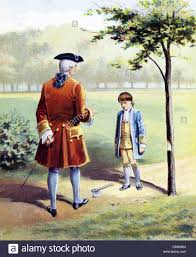In Xiaolin Chen’s The Use of Symbols in Schindler’s List, non-linguistic symbols are examined in the film by Steven Spielberg, and how these symbols “promote the development of the story in a unique ideographic manner” (Abstract). While he perfectly tells the narrative of Oskar Schindler in a very detailed manner, Spielberg’s use of color symbolizes the thematic binary of morality in Schindler’s List which is formulaic of a code to be decoded. Chen makes the argument that “All members of society have a common cultural belief (…) to understand the meaning behind the code” (1). The commonality of all society hinges on the basic difference between good from bad.
Nothing actualizes the dichotomy of morality more than Schindler’s realization of the binary in the scene of the liquidation of the ghetto. Schindler sees a girl in red walking amidst the chaos; and throughout the whole film, the audience is restricted to the color palette of black and white. However, Spielberg carefully breaks this restriction when he chose to display the little girl in a red coat. While aesthetically an assumption could be made that the device is utilized to underscore the bloodshed, narratively, the moment is where Schindler gets down from his high horse and ascribes to the perspective of humanity. Spielberg’s option to work outside the parameters of black and white parallels that of Schindler’s watershed moment. From then on, Schindler empathizes to whom that suffers. Within Schindler, another binary arouses: the Oskar from the past is no longer—the Oskar post-girl-in-red is now the protagonist of the story.
The sound of bullets rapidly infiltrates the audience’s ears, but Schindler fixates on the girl in red along with the audience. The angelic choir attempts to drown out the sound of violence and horror, but it merely amplifies the complete dread that the film constantly unveils. The horrific side of morality is always concealed—it is mostly unsurfaced, but when it arises, it is far louder than the other, unfortunately. So, Spielberg invites the audience to recognize the girl in red like Schindler.
A tracking shot of the girl assumes the perspective of Schindler. A group of to-be-executed is at a focus while the girl in red is still tracked by the camera out of focus. Spielberg overwhelms the audience with devices that conveys the chaos and confusion because what is ensuing has no explanation for it. As the girl hides under the bed the red on the coat is no more. She now joins every other victim of the massacre as a statistic.
In his review of the film, Roger Ebert questions “Why did [Schindler] change? What happened to turn him from a victimizer into a humanitarian?” and he assumes that Spielberg does not truly answer the question. But, Chen’s argument certainly unveils Spielberg’s assumption of what changed Schindler. In Ebert’s binary of a victimizer to humanitarian, Schindler realizes that sitting idle and not doing anything is within the same parameters of victimizer. Hence, the girl while under the bed, does not differ from anyone anymore. She is immediately put in the restrictions of black and white like every other character in the movie. But for a moment, the girl in red is the catalyst to Schindler’s mission that is his list.
However, in a Time article, it is mentioned that an Israeli newspaper quoted the film as “Spielberg’s Holocaust park,” and questions Spielberg’s motivation of the movie. While the theme of binary is present throughout the film, another in the realm of the critique of the film gets deconstructed. Spielberg preaches of the evils of morality and displays it in an objective way, but this does not take away from the gratification of a lesson learned at the expense of those who truly suffered. The feeling of guilt is commodified within the film, and this is not an argument of how the film should have never even been made. But, an awareness should be explored on why a critique from the Israeli newspaper exists.
In the ending scene, Schindler repeats, “I could’ve got more.” It is a crowning achievement of Liam Neeson to convey helplessness that Schindler exhibits within his mission. However, it also begs the question as to why the audience needs a lesson of morality when the said binary of morality should be a commonality in all of society as Chen presented. This guilt felt in the film removes all agency of sitting idly like how Schindler is in the scene of the liquidation at the ghetto. The film tells of a lesson, but the conversation around the film tells of a greater story and accepts the perspective from the victims.
Sources
https://www.atlantis-press.com/proceedings/iccessh-18/25898107
https://time.com/5470613/schindlers-list-true-story/
https://www.rogerebert.com/reviews/schindlers-list-1993

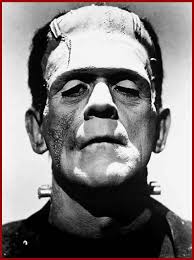 industry that started in the 1900’s (sreevesg). It allows regular people to become extraordinary things like Frankenstein or a werewolf. Originally the most common items used in special effects makeup were collodion, mortician’s wax, putty, and spirit gum.
industry that started in the 1900’s (sreevesg). It allows regular people to become extraordinary things like Frankenstein or a werewolf. Originally the most common items used in special effects makeup were collodion, mortician’s wax, putty, and spirit gum.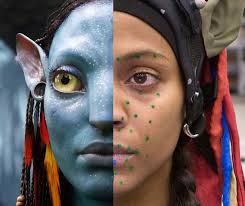 CGI technology advances. CGI stands for Computer-Generated Imagery and it allows filmers to digitally create something as big as an entire scene or something as small as removing an imperfection from an actors face (QZ). CGI has been used in films to edit the appearance of actors by making them look younger, altering their body to make them look thinner, or even adding artificial tears to their face (QZ).
CGI technology advances. CGI stands for Computer-Generated Imagery and it allows filmers to digitally create something as big as an entire scene or something as small as removing an imperfection from an actors face (QZ). CGI has been used in films to edit the appearance of actors by making them look younger, altering their body to make them look thinner, or even adding artificial tears to their face (QZ).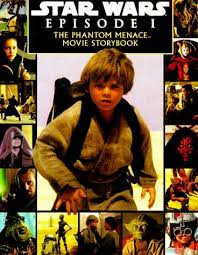 hardship on special effects makeup artists as they aren’t really needed anymore. It also doesn’t help that special effects makeup takes a long time to be applied and can be easily messed up while shooting. In a documentary, Life After Pi, they stated that between 2003 and 2013 a lot of visual effects companies were forced to file for bankruptcy (QZ). While it does seem like CGI is something that could completely erase the need for these talented artists there are still reasons to hold out. For example, In Star Wars: Episode I — The Phantom Menace there were a lot of complaints that the movie was too “cartoony” looking due to the overuse of CGI. This has lead to most studios using a blend of both special effects makeup and CGI. However, with the fact that technology is constantly advancing and becoming cheaper there may come a time where special effects makeup artists are a thing of the past.
hardship on special effects makeup artists as they aren’t really needed anymore. It also doesn’t help that special effects makeup takes a long time to be applied and can be easily messed up while shooting. In a documentary, Life After Pi, they stated that between 2003 and 2013 a lot of visual effects companies were forced to file for bankruptcy (QZ). While it does seem like CGI is something that could completely erase the need for these talented artists there are still reasons to hold out. For example, In Star Wars: Episode I — The Phantom Menace there were a lot of complaints that the movie was too “cartoony” looking due to the overuse of CGI. This has lead to most studios using a blend of both special effects makeup and CGI. However, with the fact that technology is constantly advancing and becoming cheaper there may come a time where special effects makeup artists are a thing of the past.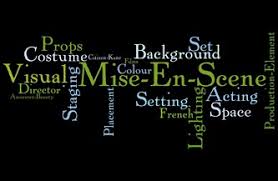
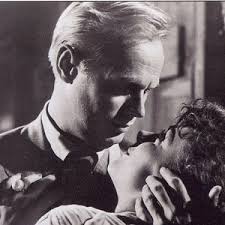 use close up shots of the actors on an overly crowded subway while Skip, the pick pocket, steals Candy’s wallet. The trend of claustrophobia continues as they introduce more characters and their homes. Skip lived in a very tiny and run down looking shack right on the water. Moe, the police’s informant, lived in just a small and dingy looking bedroom. Almost every scene is shot up close and personal. When Candy attempts to buy back the films from Skip but the end up making out instead (I found that to be a strange addition to the story line) the cameraman used a very close up shot of just the actors faces.
use close up shots of the actors on an overly crowded subway while Skip, the pick pocket, steals Candy’s wallet. The trend of claustrophobia continues as they introduce more characters and their homes. Skip lived in a very tiny and run down looking shack right on the water. Moe, the police’s informant, lived in just a small and dingy looking bedroom. Almost every scene is shot up close and personal. When Candy attempts to buy back the films from Skip but the end up making out instead (I found that to be a strange addition to the story line) the cameraman used a very close up shot of just the actors faces.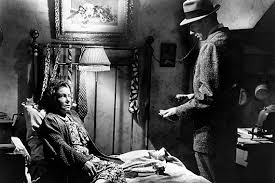 the happiest old lady. In her last scene before she’s killed she gives one last heartfelt statement to Joey that he would be doing her a favor if he killed her because she was just too tired. That’s what her surroundings really seemed to represent to me as well. It didn’t look like a home I would be comfortable and happy living in.
the happiest old lady. In her last scene before she’s killed she gives one last heartfelt statement to Joey that he would be doing her a favor if he killed her because she was just too tired. That’s what her surroundings really seemed to represent to me as well. It didn’t look like a home I would be comfortable and happy living in.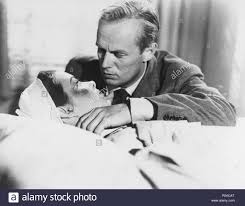 choreographed fighting where every move is planned out perfectly. Improvised fighting can end up looking more realistic than choreographed fights however it can be difficult for actors to come up with believable looking fighting without actually hurting each other. I believe that it was choreographed fighting used in Pick Up on South Street as the fight scenes weren’t all that intense or complex. Poor Candy seemed to take the brunt of it unfortunately but with there being only a few blows thrown I just think that it would’ve been simpler to plan them out ahead of time.
choreographed fighting where every move is planned out perfectly. Improvised fighting can end up looking more realistic than choreographed fights however it can be difficult for actors to come up with believable looking fighting without actually hurting each other. I believe that it was choreographed fighting used in Pick Up on South Street as the fight scenes weren’t all that intense or complex. Poor Candy seemed to take the brunt of it unfortunately but with there being only a few blows thrown I just think that it would’ve been simpler to plan them out ahead of time.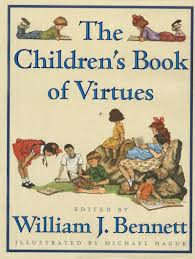 they’re stories that have been passed down from generation to generation and they instill some sort of nostalgia. For instance, when I was 1 years old my grandparents gifted me The Children’s
they’re stories that have been passed down from generation to generation and they instill some sort of nostalgia. For instance, when I was 1 years old my grandparents gifted me The Children’s